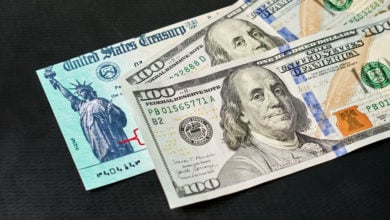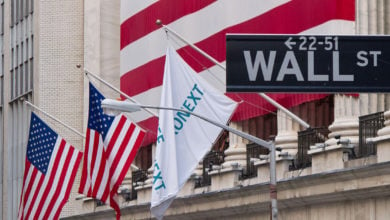The big fish eat the little fish; the sharks then eat the big fish. This is more or less the history of finance capital.
|
In other words, the concentration of capital began in the era of free competition. During the economic stagnation between 1873 and 1896, big monopolies emerged in the United States, notably in railroads, oil and steelmaking. These years of transition brought to a close the period in which free competition prevailed and opened the new era of imperialism in which monopoly and finance capital dominate.
Revolutionary leader V.I. Lenin defined finance capital this way: “The concentration of production; the monopolies arising therefrom; the merging or coalescence of the banks with industry—such is the history of the rise of finance capital and such is the content of that concept.” (“Imperialism, The Highest Stage of Capitalism,” 1916) From providing loans to merchants and small producers, banks went on to provide money capital to—and gain effective control of—industrial monopolies.
From its origins forward, finance capital itself became more and more concentrated as monopoly firms grew in size, and more centralized as the number of rival financial institutions progressively shrank.
Passage and repeal of Glass-Steagall
In 1933, Congress passed and President Roosevelt signed into law the Glass-Steagall Act, which enforced a separation between commercial banks, which accept and retain deposits, and investment banks, which do not. That prohibition was aimed at preventing financial abuses thought to have contributed to the 1929 stock market crash. In 1999, President Clinton signed into law legislation that repealed Glass-Steagall.
The repeal allowed the rise of universal mega-banks such as Citigroup and Bank of America. These institutions combine commercial banking, investment banking, merchant banking and even insurance under single holding companies, which further concentrates and centralizes finance capital.
This historical process continues on a global scale in the 21st century. The Federal Reserve-arranged takeover of the fifth-largest investment bank, Bear Stearns, by rival JP Morgan Chase is only the most recent example.
Both are international banking giants. JP Morgan Chase represents the merger of the old Morgan and Rockefeller financial groups. Bear Stearns was founded in 1923 and for many years was headed by Salim L. Lewis, who was included by the leading U.S. business magazine Business Week in its “Vulture Hall of Fame” in 2001.
In recent years, the company became one of the biggest players in the mortgage securities business on Wall Street. After more than 80 straight years of profitable operation, that move turned out to be its undoing with the onset of the mortgage crisis.
But before its demise, Bear Stearns paid out billions in bonuses to its employees, with the lion’s share going to its top executives. According to a Bloomberg financial website article, bonuses paid out by the top five brokerage firms in 2006 alone were estimated at $36 billion, a 30 percent jump from the previous year’s record. Bonuses paid out by Bear Stearns for 2006 were estimated to total $2.6 billion.
“Never in the history of Wall Street have so many earned so much in so little time,” wrote Christine Harper for Bloomberg.com in 2006.
Falling dominos
It is noteworthy that the fire-sale buyout of Bear Stearns is not simply a case of a shark devouring a big fish. The shark in this case—JP Morgan Chase—needed substantial help from the Fed in the form of a $30 billion loan guarantee against further losses in Bear Stearns’ huge portfolio of mortgage-backed securities.
The $30 billion safety net is meant to alleviate the anxieties of investors who might otherwise rush in droves to take their money elsewhere, spelling financial disaster for JP Morgan Chase.
As Paul Solman explained on PBS’s NewsHour on March 21, the big banks, hedge funds, and other financial institutions dominating the financial system can be compared to a row of dominoes, all of which could topple if losses from the mortgage crisis were to cause just one to fall.
For a while, it appeared that Bear Stearns might be that domino. This is why, contrary to neo-liberal ideology, the Federal Reserve did not leave the problems of Bear Stearns for the “free market” to sort out. Instead, it stepped in to make sure that first domino did not fall.
With the means of production and finance capital so thoroughly concentrated, the “free” market is not able to regulate and solve its own contradictions. The potential of acute social and economic crisis makes state intervention an absolute necessity.
On top of backing the “fire sale” of Bear Stearns, the Federal Reserve took other emergency action to stave off an all-out panic on Wall Street. The Fed announced in March that it would make billions in loans directly to investment banks and brokerages at the Fed’s so-called discount rate, a right previously reserved for commercial banks.
In addition, on March 11, the Fed said that it will now accept mortgage-backed securities as collateral on up to $200 billion in loans of Treasury securities—easily turned into cash—to favored banks and securities broker-dealers known as “primary dealers.”
Needless to say, homeowners in distress have been left out in the cold.
Fingers in the dike
Federal Reserve chairman Ben Bernanke resembles nothing so much as the legendary little Dutch boy sticking his fingers into one hole after another in a dike that keeps springing more leaks. If the dike gives way, the result could be a devastating financial and economic flood on a worldwide scale.
We are not there yet, but the latest economic statistics are not encouraging.
Home prices, for example, continue their steep decline, further undermining the shaky financial edifice built on mortgage-backed securities, mortgages that are in turn backed by houses whose owners are increasingly unable to keep up with their payments.
A widely watched index of U.S. home prices fell 11.4 percent in January compared to one year earlier—the steepest drop since data for the indicator was first collected in 1987, according to a March 25 Associated Press story.
Sales of new homes fell in February for the fourth straight month, pushing activity down to a 13-year low as the steep slump in housing continued, the AP reported on March 26.
According to the same AP article, “orders to factories for big-ticket manufactured goods fell 1.7 percent in February, a second consecutive decline and further evidence of the economic troubles gripping the country.”
Unsold homes go empty and factories slow down or become idle, while millions face homelessness and joblessness. These recurring crises, whose burden the capitalists are quick to throw onto the shoulders of the working class, create deprivation in the midst of plenty. They are unique to the capitalist system; a product of the anarchy of capitalist production where capitalists decide economic matters in an uncoordinated fashion, with only their profits in mind.
The evolution of capitalism from free competition to a concentration of trusts and syndicates—today’s finance capital—has actually laid the material basis for a planned economy. It has given rise to large-scale production and tight integration between industries, all of which could be put to the service of satisfying human needs instead of profit-making.
At the same time, the economic and social contradictions are clearly becoming more concentrated and ever sharper. That lays the basis for struggles that can bring about the revolutionary changes needed to escape the madness of the profit system.







